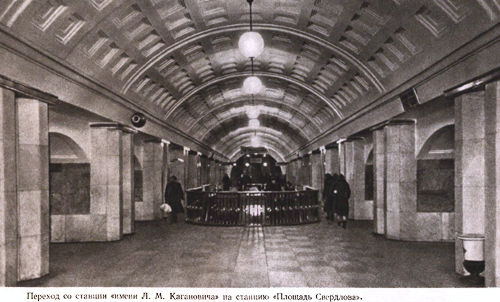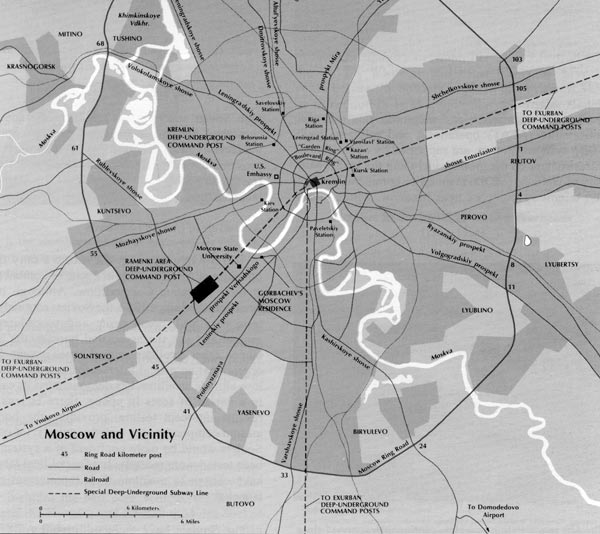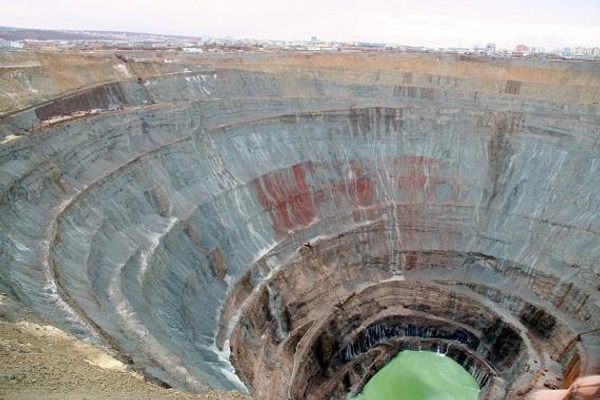Subterranean Secrets: Moscow’s Metro-2 and the DIY-Subway System
The subterranean world has always captured our imagination. From early Christian depictions of hell and the Parisian catacombs, to Cold War-era bunkers and unfinished subway stations in New York we know something unnerving – but exciting! – is going directly beneath our feet. Post-Soviet cities are a perfect location for the existence of secret subterranean networks, real or imagined. At its peak, the Soviet Union certainly had the industrial capability to construct a shadow metro line in Moscow and an intelligence system in place to keep it hidden. Whether they actually did or not, is another story.

The underground Neglinaya River as it appears today. (source)
Russian rulers have a long history of asserting their power through large subterranean construction projects, sometimes with shadowy purposes. Shortly before the fall of Constantinople, the prized Byzantine library made its way over to Moscow. It was part of Sofia Paleolog’s dowry, the niece of the last ruler of Byzantium. The library contained 800 manuscripts in Greek, Hebrew, Latin and Arabic. A secret chamber was built for the library deep under the Kremlin. Its location was lost sometime in the 1500s. In the late 1500s, Ivan the Terrible constructed a torture chamber deep underground. Legend has it that he executed everyone who worked on its construction, to prevent anyone from identifying its exact location. In the 1700s, Catherine the Great channeled the Neglinaya River into an underground network of brick-lined canals, as part of Moscow’s expansion process. By the time the Bolsheviks came to power, there was already an advanced subterranean network under Moscow. Today, a cross-section of central Moscow might have as many as 15 levels, plunging as deep as 700 meters.


Ohotny Ryad Station as it appeared in the 1950’s. (source)
Kievskaya Station, one of the first four stations opened in 1935. (source)
Communism emerged in Russia under a banner of modernity, characterized by urbanization and massive industrial projects. The first plans for a metro system in Moscow date back to the times of the Russian Empire, though construction did not commence until 1931. The Moscow metro system carried a heavy symbolic meaning – the epitome of Stalinist architecture; a grand public project in the heart of a worker’s paradise; the antithesis to public transit in capitalist London and New York that was starting to lose their initial luster.
The building material for the metro came from Moscow’s finest imperial and religious buildings that were being torn down on Stalin’s orders. The marble used for Park Kultury, Kropotninskaya and Okhotny Ryad stations came from the church of Christ the Savior. 75,000 workers completed the construction of the initial line in two years, under atrocious working conditions. The work was done mostly by hand because of a shortage of mechanized tools.
Spurred by Stalin’s paranoia of assassination, a secret metro line “Metro-2” was started sometime before the war, as new lines were added to the Moscow Metro. Metro 2 was directly linked to Stalin’s Dacha (suburban residence), the Ministry of Defense, command bunkers, and other military facilities. Theories diverge about the expansiveness of the project. There are sources that claim that construction of the project stopped after Stalin’s death. Others claim that every administration added new lines to the system, under the guise of urban renewal projects. An expansive website about the Moscow Metro (written in Russian), claims that there are four lines connecting various government buildings of the Kremlin, the FBS headquarters and the government airport at Vnokovo.

Air shafts for the underground command center in Ramenki circled above. (source)
Moreover, there are rumors of an underground city capable of accommodating up to 30,000 people at Ramenki, as well as an alternate command post for the senior commanders of the Russian Armed Forces. The Ramenki underground complex, said to have been finished in the mid-1970s, was reportedly equipped to sustain the lives of thousands of people for up to 30 years. It had - or still has - food depots, generators, sleeping quarters, cinemas and even swimming pools!
Rumors of the existence of Metro-2 are extremely common in Russia. Russian citizens have propagated them as proof of the Soviet regime’s paranoia and self-indulgence. A subterranean exploration group called the Diggers has claimed to know its way around Metro-2’s tunnels. One writer has even suggested a practical application for the tunnels, as a way to relieve the Moscow metro of overcrowding. The Moscow metro is the world’s second most heavily used metro system, after Tokyo’s subway (for comparison, New York City’s MTA is number five).

New York City’s decommissioned City Hall subway station. (source)
All subway systems have incomplete lines and abandoned stations, like the City Hall or the South 4th Street stops of the MTA. It is possible that Metro-2 is just a collection of abandoned metro lines. However, according to the New Zealand Herald, the demolition of a Soviet-era hotel Rossiya exposed a network of tunnels that run from the Kremlin under the hotel to an unknown destination. Shalva Chigirinsky, the millionaire developer whose firm has been performing construction on the site, said mysterious agents - presumably from the Federal Security Service (FSB) - were keeping his workers away from part of the hotel site.

A United States Department of Defense report from 1991 featured a map in which a dotted line depicts the top-secret Metro-2’s route. (source)
The most compelling evidence for the existence of Metro-2 comes from a US Department of Defense report written in 1991. Military Forces in Transition talks about an extensive underground installation network, linked by subterranean transit under Moscow and its suburbs. The report claims that this subterranean network would allow the Soviet government to function in the event of nuclear war.
On a less government conspiracy tinged note, EnglishRussia.com introduced us to Leonid Murlyanchik, a pensioner who decided to build a metro system for his town Lebedyan. He has been single-handedly building the system since 1984.

The ultimate DIY subway and its creator. (source)
All of the materials for the metro have been purchased with Murlyanchik’s pension, which equals to about $250 a month. So far he’s got about 300 meters of tunnel built, complete with raised concrete platforms for four-person electric wagons. He has also collected old Soviet coins that he plans to use as tokens, and he is working on designs for access points into his neighbors’ houses. While there has been some concern over the authenticity of this metro system, this ABC news report from Australia seems to validate its existence.



Follow us on Twitter to get the latest on the world's hidden wonders.
Like us on Facebook to get the latest on the world's hidden wonders.
Follow us on Twitter Like us on Facebook